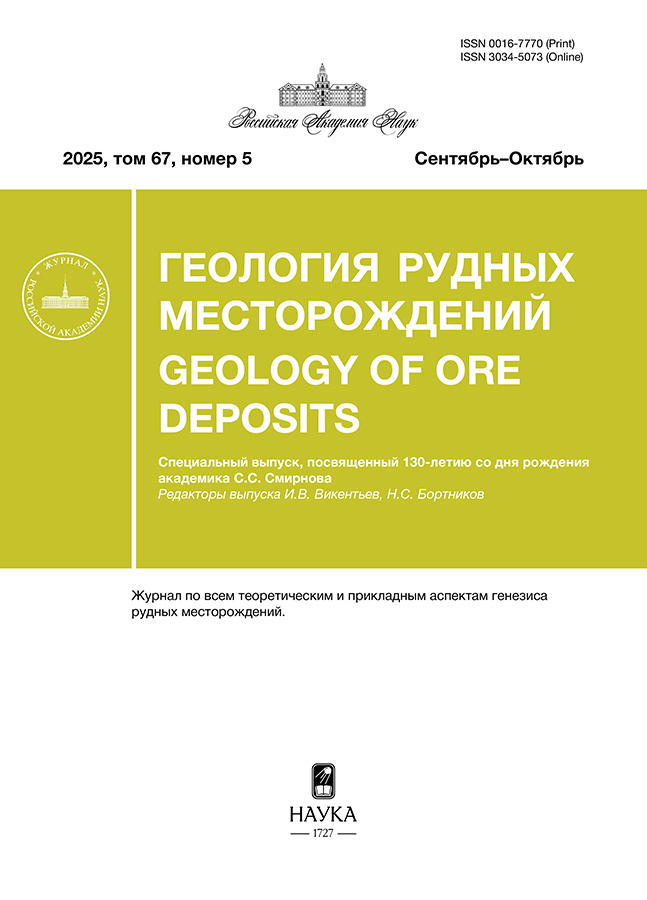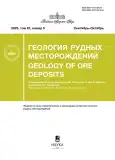Geology of Ore Deposits
Media registration certificate: No. 0110255 dated 02/08/1993
Founder: Institute of Geology of Ore Deposits, Petrography, Mineralogy and Geochemistry RAS
Editor-in-Chief: Ilya Vladimirovich Vikentyev, Doctor of Geological and Mineralogical Sciences
Number of issues per year: 6
Indexation: White List (level 1), RISC, List of the Higher Attestation Commission (VAK)
Edição corrente
Volume 67, Nº 5 (2025): VOL 67, NO5 (2025)
Articles
THE FOUNDER OF A METALLOGENIC SCIENCE (TO THE 130TH ANNIVERSARY OF S. S. SMIRNOV)
Resumo
 509-526
509-526


THE “TIGRINOYE” GREISEN TIN-TUNGSTEN DEPOSIT (PRIMORSKY KRAI, RUSSIA): POSTMAGMATIC STAGE OF THE MAGMATIC-FLUID MINERAL FORMING SYSTEM
Resumo
 527-559
527-559


Otechestvennoe tin deposit (Magadan region, north-east Russia): genesis and bismuth mineralization
Resumo
 560-590
560-590


Rare metal rocks of the Ingursky Massif (Western Transbaikalia): composition, geochemistry and factors that determined the formation of rare metal mineralization
Resumo
 591-613
591-613


Phanerozoic magmatic complexes of the Argun block (SE Transbaikalia, China, Mongolia) and their metallogenic specialization
Resumo
 614-640
614-640


Tetrahedrite-freibergite series of fahlore in the epithermal Ag-Pb-Zn Mangazeyskoye ore deposit (West Verkhoyansk region, Yakutia, Russia): Intergrowths, heterogeneity, chemical composition, and deposition conditions
Resumo
 641-677
641-677


Epithermal Au-Ag and Ag deposits of the Okhotsk sector of the Okhotsk-Chukchi volcanic belt: metallogeny, mineral paragenesis, fluid regime
Resumo
 678-711
678-711


The Gorevskoe Giant Zinc-Lead Deposit, Yenisei Ridge, Russian Federation
Resumo
 712-740
712-740












